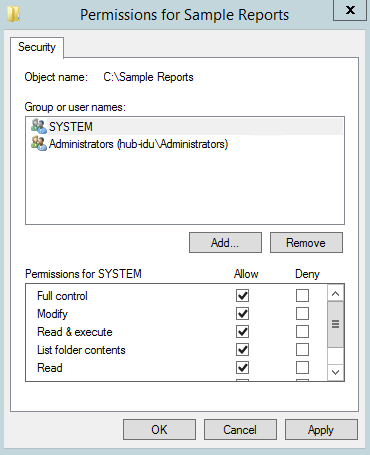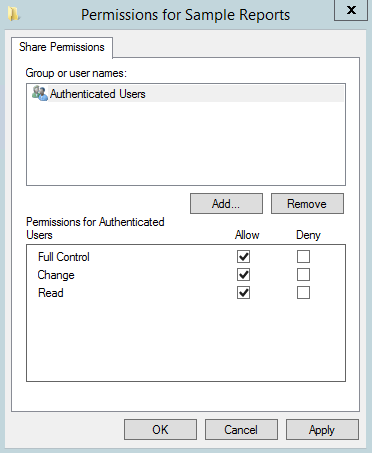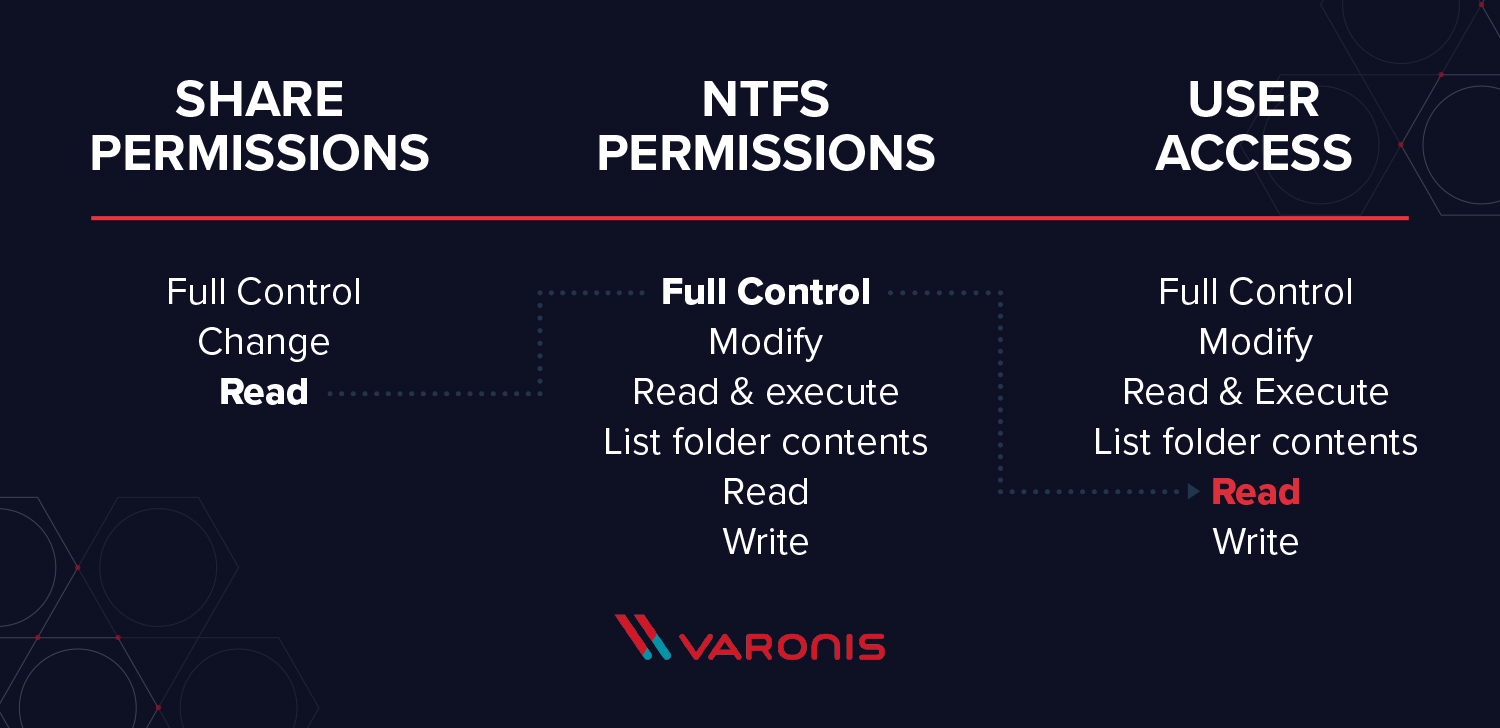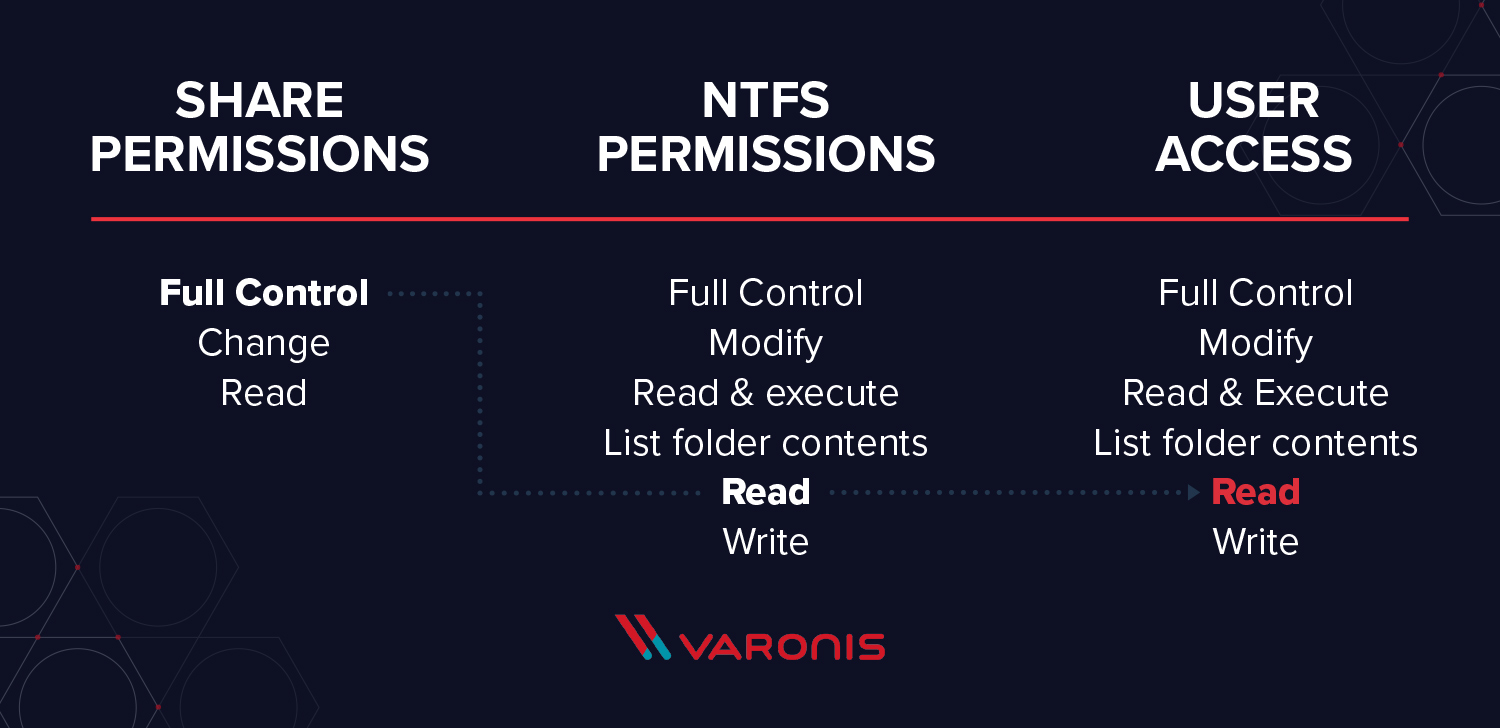What Type Of Permissions Must Be Used On A Fat Volume?
One of the well-nigh critical security concepts is permissions management: ensuring that proper permissions are set with users – and that usually ways knowing the difference betwixt share and NTFS permissions.
Share and NTFS permissions function completely separately from each other, but ultimately serve the same purpose: to prevent unauthorized admission.
Get the Free Pen Testing Agile Directory Environments EBook
However, when NTFS and share permissions interact or when a shared folder is in a separate shared binder with dissimilar share permissions, users might non be able to admission their data or they can get higher levels of access than security admins intend.
Here are primal differences between share and NTFS permissions so you'll know what to exercise.
What is NTFS?
A file system is a style of organizing a drive, indicating how data is stored on the bulldoze and what types of data can be fastened to files, such equally permissions and file names.
NTFS (NT File System) stands for New Technology File System (NTFS). NTFS is the latest file arrangement that the Windows NT operating organization uses for storing and retrieving files. Prior to NTFS, the file allocation table (FAT) file organisation was the primary file system in Microsoft'south older operating systems, and was designed for small disks and unproblematic binder structures.
NTFS file arrangement supports larger file sizes and hard drives and is more than secure than FAT. Microsoft get-go introduced NTFS in 1993 with the release of Windows NT 3.1. It is the file arrangement used in Microsoft'due south Windows x, Windows 8, Windows 7, Windows Vista, Windows XP, Windows 2000, and Windows NT operating systems.
NTFS Permissions
NTFS permissions are used to manage access to the files and folders that are stored in NTFS file systems.
To see what kind of permissions you will be extending when you lot share a file or binder:
- Right click on the file/folder
- Go to "Properties"
- Click on the "Security" tab
All and so y'all'll navigate this window:

Besides Total Control, Change, and Read that can be gear up for groups or individually, NTFS offering a few more than permission options:
- Total control: Allows users to read, write, change, and delete files and subfolders. In addition, users can change permissions settings for all files and subdirectories.
- Modify: Allows users to read and write of files and subfolders; as well allows deletion of the folder.
- Read & execute: Allows users to view and run executable files, including scripts.
- List folder contents: Permits viewing and listing of files and subfolders equally well as executing of files; inherited by folders only.
- Read: Allows users to view the folder and subfolder contents.
- Write: Allows users to add files and subfolders, allows you to write to a file.
If you've ever involved in permissions direction within your organization, y'all'll eventually encounter 'broken' permissions. Rest assured, they're repairable.
Share Permissions
When yous share a folder and desire to set the permissions for that folder – that's a share. Essentially, share permissions determine the type of access others have to the shared binder across the network.
To meet what kind of permissions you volition be extending when you share a folder:
- Right click on the folder
- Go to "Backdrop"
- Click on the "Sharing" tab
- Click on "Advanced Sharing…"
- Click on "Permissions"
And you'll navigate to this window:

There are 3 types of share permissions: Full Control, Change, and Read.
- Full Command: Enables users to "read," "modify," as well as edit permissions and take ownership of files.
- Change:Change ways that user can read/execute/write/delete folders/files within share.
- Read:Read allows users to view the folder's contents.
A Caveat on Share Permissions
Sometimes, when yous have multiple shares on a server which are nested beneath each other, permissions tin can get complicated and messy.
For case, if y'all have a "Read" folder in a subfolder share permission but and then someone creates a "Alter" share permission above it at a higher root, y'all may accept people getting higher levels of admission so you intend.
There'due south a way effectually this, which I'll get to below.
How to Use Share and NTFS Permissions Together
1 of the common questions that comes upwardly when you're configuring security is "what happens when share and NTFS permissions collaborate with each other?"
When y'all are using share and NTFS permissions together, the almost restrictive permission wins.
Consider the following examples:
If the share permissions are "Read", NTFS permissions are "Full command", when a user accesses the file on the share, they will be given "Read" permission.

If the share permissions are "Full Command", NTFS permissions are "Read", when a user accesses the file on the share, they will however be given a "Read" permission.

Managing NTFS Permissions and Share Permissions
If you find working with 2 divide sets of permissions to exist besides complicated or time consuming to manage, you tin switch to using but NTFS permissions.
When you lot expect at the examples in a higher place, with just three types of permissions setting, shared binder permissions provide express security for your folders. Therefore, you proceeds the greatest flexibility by using NTFS permissions to control access to shared folders.
Moreover, NTFS permissions utilize whether the resource is accessed locally or over the network.
To do this, change the share permissions for the folder to "Full Command."
You can then brand whatever changes you want to the NTFS permissions without having to worry nearly the share permissions interfering with your changes.

Cindy Ng
Cindy is the host of the Inside Out Security podcast.
What Type Of Permissions Must Be Used On A Fat Volume?,
Source: https://www.varonis.com/blog/ntfs-permissions-vs-share
Posted by: singerdard1949.blogspot.com


0 Response to "What Type Of Permissions Must Be Used On A Fat Volume?"
Post a Comment